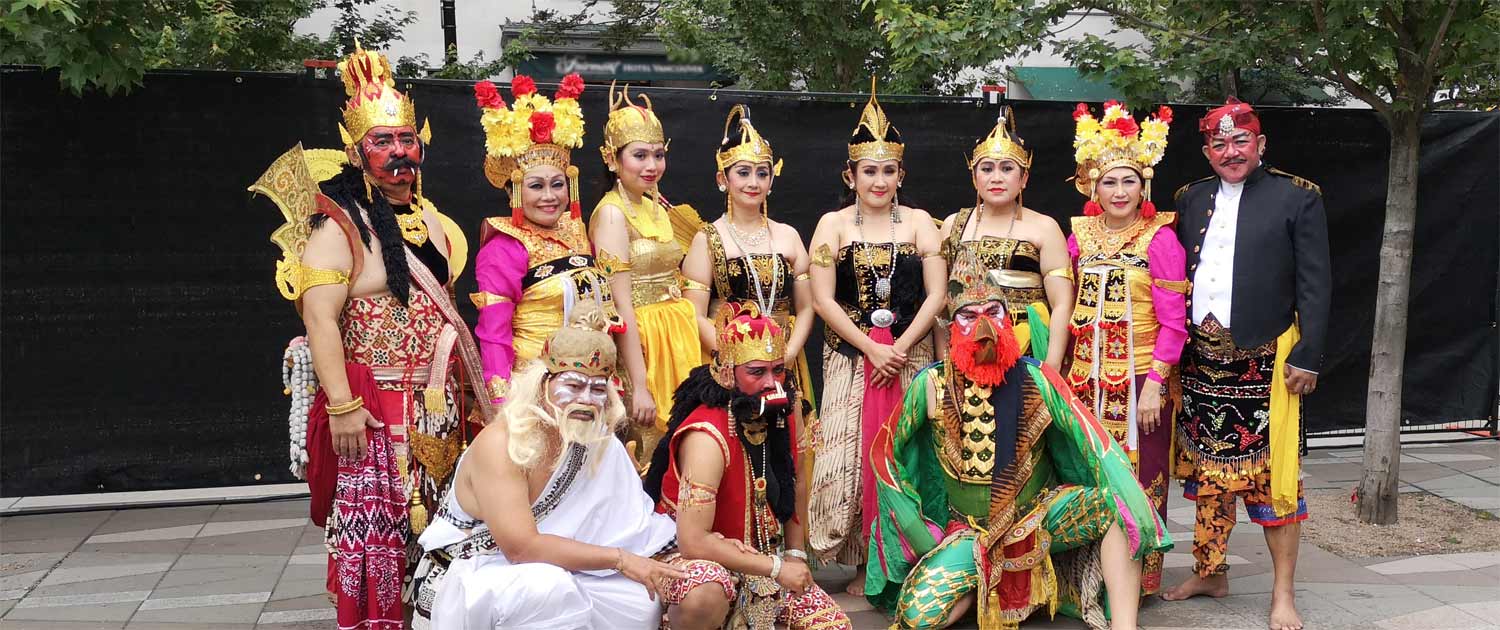Sampan Bujana Sentra Showcases Indonesian Culture
Indonesia is the 4th largest country in the world. It’s art form is immense, .ranging from regional dances, traditional music, (Gamelan orchestra from Java, Bali, Sunda, Talempong etc.), traditional theatre, which can offer a variety of attractions such as Debus (ritual display of invulnerability in West Java), Jatilan (horse made of plait work which men dance themselves into a trance), Reog (masked dance).
Sampan Bujana Sentra (Indonesian Young Artists Group) has conducted performances since year 1961 up to-date.
Their artistic material encompass the archipelago of regional art dance, traditional music such as gamelan orchestra of Jawa, Bali, Sunda, Talempong and Kendang Sumatra, Aceh, Angklung (musical instrument consisting of
suspended bamboo tubes which sound when shaken), kulintang (Minahasan musical instrument similar to the Marimba) etc. and also traditional theatre in the form of attractions such as Debus, Reog, Kuda Lumping (Jatilan) etc.
Artists range from children up to adult age.
Performances for Saturday, July 6: 1:00 – 1:30 pm
Tari Pelegongan Mesatya: Legong is one of Balinese classic dances and Mesatya means a loyal soul. Pelegongan Mesatya expresses the loyalty of female troops to their leader while fighting the enemies in a war.
Tari Kiprah Glipang: A traditional dance from Probolinggo Regency in East Java. The dance illustrates the daily life of its people and merges Islamic culture and Javanese culture.
Sendratari Shinta Hilang: This episode of Javanese Ramayana epic recounts how Shinta, the wife of Rama, was kidnapped by Rahwana, King of Alengka. Shinta was left alone by Rama and his brother, Lesmana, who were trying to catch a golden deer for her. Jatayu, a vulture bird, tries to rescue Shinta but fails to succeed.
Performance for Saturday, July 6: 1:00 – 1:30 pm
Tari Lenggang Nyai: Lenggang Nyai is a dance originally from Betawi, Jakarta. It was inspired by a Betawi legend called Nyai Dasimah.
Nyai Dasimah is a beautiful lady from Betawi who is in a dilemma of choosing her future husband. After getting married, there are many restricted rules created by her husband that she has to follow.
She feels her rights as a woman are taken away. Eventually, Nyai Dasimah decides to rebel and fight for her rights.
The movements of this dance express the lively and agile personality of Nyai Dasimah. Nowadays, Lenggang Nyai is often performed as an opening act for events or ceremonies.
Tari Topeng Tua: A Balinese Dance, Topeng Tua (Old Mask) is performed by a dancer with magnificent costume and uses mask made from ylang-ylang wood.
From the look of its face, an elderly man is the main character of the
dance. The choreography illustrates an elderly man reminiscing his younger days.
Sendratari Rahwana Gugur: This is East Java performance is the last episode of Ramayana epic. Hanoman, a white monkey and the son of Anjani and a god named Bayu, is instructed by Rama to give a gift that symbolises Rama’s love to Shinta.
At Soka Garden, Shinta is always accompanied by Trijata, who is the niece of Rahwana. Rahwana always tries to persuade Shinta to be his wife but he continuously fails.
Hanoman arrives in Alengka with a message from Rama and involves himself in a fight. In the end, Rahwana is defeated and lost his life in the hands of Rama.



 © Nikao Media
© Nikao Media © Adalat Omar Dance Company
© Adalat Omar Dance Company